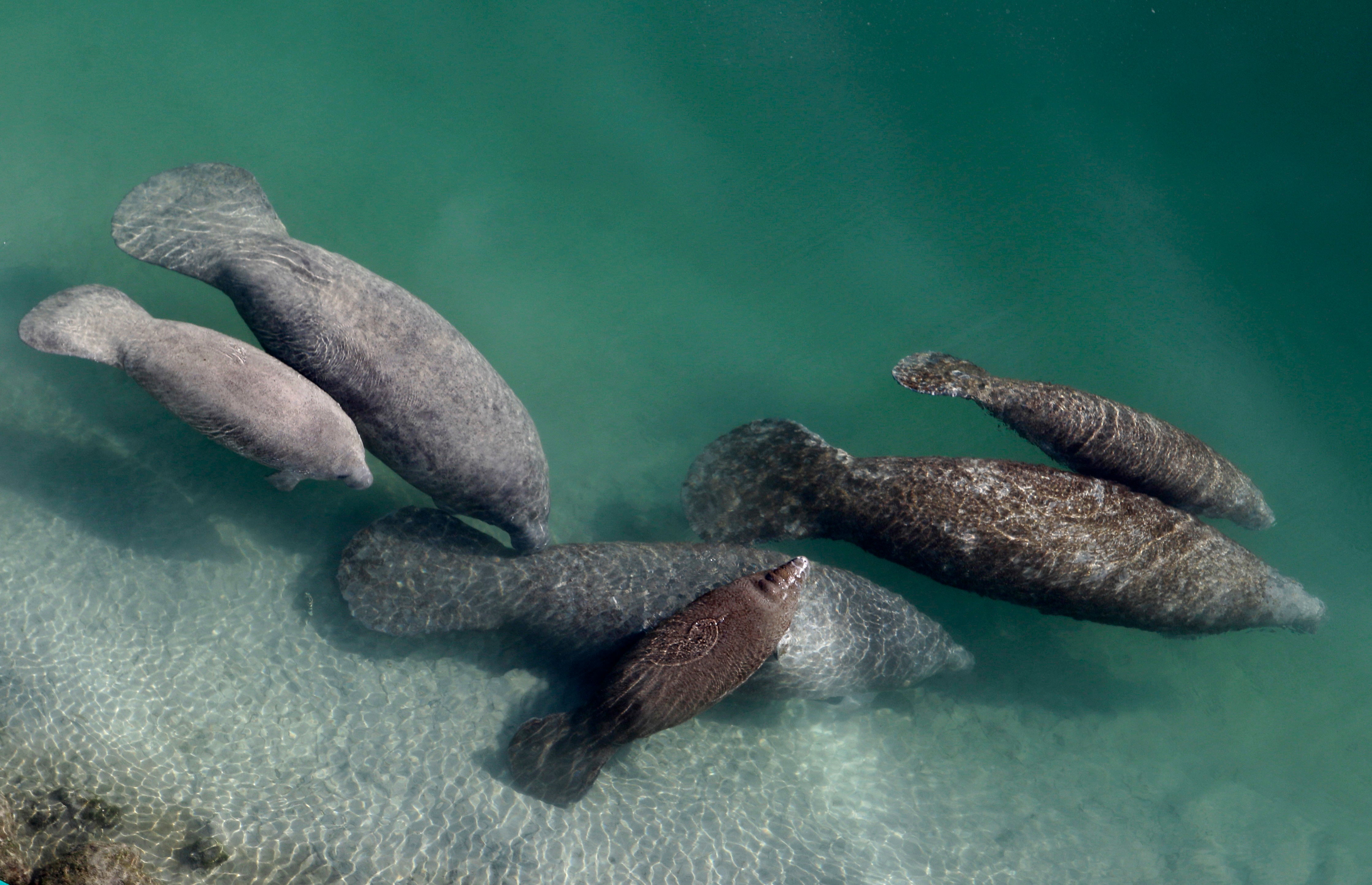Florida sees fewer manatee starvation deaths as feeding ends
The effort to feed thousands of pounds of lettuce to starving manatees in Florida manatees has officially ended for the winter season, as deaths of the marine mammals appear to be slowing despite the long-term threat of pollution to their main food source, seagrass

Your support helps us to tell the story
From reproductive rights to climate change to Big Tech, The Independent is on the ground when the story is developing. Whether it's investigating the financials of Elon Musk's pro-Trump PAC or producing our latest documentary, 'The A Word', which shines a light on the American women fighting for reproductive rights, we know how important it is to parse out the facts from the messaging.
At such a critical moment in US history, we need reporters on the ground. Your donation allows us to keep sending journalists to speak to both sides of the story.
The Independent is trusted by Americans across the entire political spectrum. And unlike many other quality news outlets, we choose not to lock Americans out of our reporting and analysis with paywalls. We believe quality journalism should be available to everyone, paid for by those who can afford it.
Your support makes all the difference.The effort to feed thousands of pounds of lettuce to starving manatees in Florida manatees officially ended for the winter season Wednesday, as deaths of the marine mammals appear to be slowing despite the long-term threat of pollution to their main food source, seagrass.
State and federal wildlife officials said during an online news conference that just under 400,000 pounds (181,000 kilograms) of lettuce was provided to hundreds of manatees at a warmwater power plant site along the east coast where they typically gather for the winter.
It was the second year of the experimental feeding program that was launched because of the deaths of at least 1,100 manatees in 2021, which was by far the most ever recorded. All told, more than 2,000 manatees have died mostly of starvation from January 2021 through March 10 of this year, according to the Florida Fish and Wildlife Conservation Commission.
The pace of manatee deaths seems to have slowed. Thus far this season, wildlife officials have counted 163 deaths. They attribute the slowdown to various factors including the partial recovery of seagrass in key winter areas and more animals that appeared to be in better physical condition than in the past.
“We're well below what we experienced the past two winters,” said Andy Garrett, the FWC manatee rescue coordinator.
Manatees are gentle, round-tailed giants sometimes known as sea cows that weigh as much as 1,200 pounds (550 kilograms) and can live as long as 65 years. Manatees are Florida’s official state marine mammal but are listed as a threatened species, also facing peril from boat strikes and toxic red tide algae outbreaks along the state's Gulf coast. Their closest living relative is the elephant.
There are enhanced efforts to rehabilitate malnourished manatees that are recovered alive. As of Wednesday, there were 84 manatees at rehab sites around the country, including 72 in Florida, said Teresa Calleson of the U.S. Fish and Wildlife Service. Of that total, she said 15 are considered non-releasable because of their permanently fragile health.
“The rest will go back to the wild population once they clear their rehabilitation,” Calleson said.
The total cost of this season's feeding program was about $250,000, most of which was covered by donations from people around the country to a nonprofit affiliated with the FWC.
It's unclear whether officials will operate the program again next winter. One key measure will be an ongoing comprehensive count of the overall Florida manatee population, which is expected to be complete by fall. Previous estimates have placed the number of manatees at about 7,500 around the state.
Beyond that, millions of dollars are being poured into various projects aimed at the root of the problem: nitrogen, phosphorus and sewage pollution from agriculture, urban runoff and other sources that trigger algae blooms, which in turn kill off the seagrass that manatees and other sea creatures rely upon.
“Excessive human-produced nutrient pollution is a growing threat to all seagrass communities,” the Save The Manatee Club wrote in a summary of the problem. “When combined with the warming effects of climate change and sea level rise, these excess nutrients present an even greater danger to the future of seagrasses wherever they are found.”
Last year, Florida legislators approved about $8 million for several habitat restoration projects around the state. Another $19.5 million in federal funding was recently earmarked for 33 projects ranging from stormwater treatment upgrades to filter systems that remove harmful nitrates from water that goes into the Indian River Lagoon, the huge east coast estuary where manatees congregate in winter.
It will take time to assess how much impact the starvation event will have on manatees in the future, said FWC manatee veterinarian Marine Dewit. The effects could include problems with reproduction. Most dead or distressed manatees are reported by people who call an FWC wildlife hotline.
“Considering the large number of manatees that were lost, there's going to be an impact on the population that has yet to be defined,” Dewit said. “The winters continue to be of concern. This is still an ongoing unusual mortality event. It still deserves attention and still deserves response.”